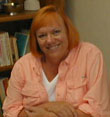ClipBoard Information
 ClipBoard is a comprehensive electronic teacher portfolio system designed to guide the professional development of early childhood education. ClipBoard allows teachers to collect artifacts that document teaching competencies aligned with national and state standards for early childhood educators.
ClipBoard is a comprehensive electronic teacher portfolio system designed to guide the professional development of early childhood education. ClipBoard allows teachers to collect artifacts that document teaching competencies aligned with national and state standards for early childhood educators.
ClipBoard includes the following sections.
- Artifacts: Storage for documents, photos, and other files generated by the user.
- Showcases: Personal, Professional, Photo Gallery, Slideshow (Collections of documents, photos, and reflections of user).
- Exhibition: Showcases published for public viewing.
- Library: Collection of resources standards, student profiles, forms, reports, lesson plans, assessments, and documents for sharing.
ClipBoard
The electronic teacher portfolio system, ClipBoard, has been developed and refined to meet the needs of the ECE educators. The website for ClipBoard is http://eport.soundpiper.com/clipboard. Clipboard has been offered as part of the Summer Institute 2004. (Ten teachers took ClipBoard for credit, however, an additional eight received the training, but elected not to receive credit). Another ClipBoard course is being offered in spring 2006 for teachers throughout the region.
The Professional Development Specialists received an initial training on ClipBoard in November 2004 and received follow-up training in January, February, April, May, August, and November. The Professional Development Specialists have been working with preschool teachers in their counties on the use of ClipBoard. The Professional Development Specialists have trained 38 educators on Clipboard.
Teachers who have participated in the E-CIRCLE Literacy coursework through the University of Pacific and College of the Siskiyous are required to submit portfolios as a final assessment. Although many submit hard copy binders, they have been encouraged to use ClipBoard to submit their portfolios electronically. They create professional showcases on each of the units of study in E-CIRCLE: Classroom Management, Phonological Awareness, Vocabulary, Read Alouds, Setting the Stage for Children's Talk, Written Expression, and Mathematics. The slideshow showcase option in ClipBoard was created specifically to give teachers an opportunity to conduct the E-CIRCLE learning histories electronically in ClipBoard.
A library of resources is available for teachers in the Clipboard forum. These include the Tehama Pre-K student learning standards, California Teacher Competencies, NAEYC Teacher Standards, forms, templates, lesson plans, photographs, professional documents, and reports. The reports section includes copies of the California Professional Growth Plan and Record, the Child Permit Verification of Hours, and the Parent Evaluation Form. The student profile reports include forms for assessment of learning standards for English/Language Arts, Mathematics, History/Social Sciences, Visual and Performing Arts, Physical Education, and Health. This year the ClipBoard library was expanded to include all of the E-CIRCLE forms in document format so that teachers can type lesson plans and assessments either for printing or electronic submission to ClipBoard.
 At this time, 147 early childhood educators have ClipBoard accounts. These teachers have uploaded artifacts (forms, documents, photographs) and designed 235 showcases (58 personal, 71 photo galleries, 75 professional, and 31 slideshows). Finished showcases may be added to a public exhibition. These may be viewed by guests at the Clipboard website. Click on the link. (Sign-in: guest; password: guest)
At this time, 147 early childhood educators have ClipBoard accounts. These teachers have uploaded artifacts (forms, documents, photographs) and designed 235 showcases (58 personal, 71 photo galleries, 75 professional, and 31 slideshows). Finished showcases may be added to a public exhibition. These may be viewed by guests at the Clipboard website. Click on the link. (Sign-in: guest; password: guest)
Teachers are demonstrating an increase in their use of technology through self-reports on the technology survey, an increase in the number taking on-line classes, and their use of Clipboard. Teachers have demonstrated significant growth in the ability to use technology more effectively. Teachers have learned to use digital cameras and photo editing software, as well as developed basic skills of word processing and file management. One teacher has submitted a video within a professional showcase which further expands the potential for multimedia demonstration of teaching proficiencies.
Continue to Next Page




